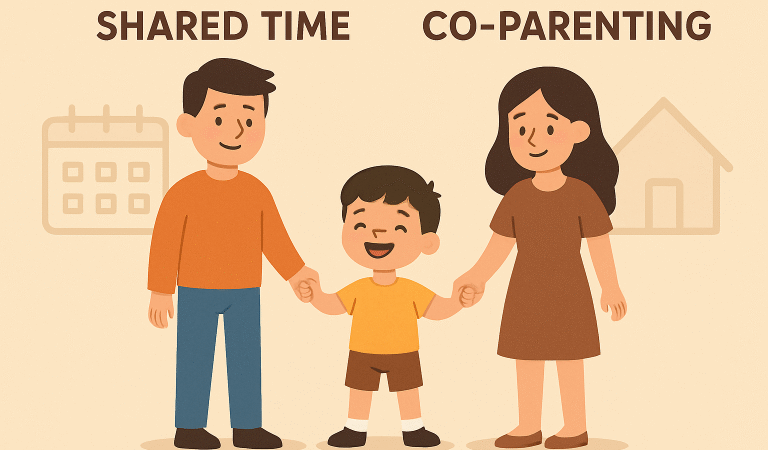Creative Classroom Projects: Inspiring Students to Become Authors
Key Takeaways
- Encouraging students to write and publish their stories fosters creativity, confidence, and literacy skills.
- Integrating collaborative book-making projects into classroom instruction improves teamwork and communication among students.
- Real-world connections, such as publishing and sharing student work, can boost motivation and pride in their achievements.
- Research supports project-based learning as an effective tool for enhancing student engagement and learning outcomes.
Table of Contents
- Why Student Authors Matter
- Classroom Benefits of Student Publishing
- Getting Started with Book Projects
- Collaboration and Peer Learning
- Real-World Connections and Publishing Options
- Overcoming Common Challenges
- Research on Project-Based Learning
- Tips for Sustaining Engagement
- Conclusion
Why Student Authors Matter
Turning students into authors is one of the most empowering shifts a classroom can make. Authorship helps students gain ownership of their learning, improves literacy, and sparks imagination. When given the chance to write, edit, and publish their own stories, students are encouraged to think beyond rote assignments and develop a unique voice. This process builds essential skills, such as critical thinking and problem-solving, which benefit students across all subject areas. Publishing amplifies these effects, turning abstract schoolwork into something tangible and enduring. Teachers can create this opportunity by using classroom writing tools and resources that guide students through the journey. For instance, platforms like Studentreasures.com provide structure and support for educators, allowing them to turn their classroom’s collective creativity into professionally bound books. This validates student efforts and sets a powerful precedent: their ideas and voices matter in the larger world. Beyond academic growth, authorship nurtures confidence and inspires students to share their perspectives with pride. It also fosters collaboration, as students learn to support and celebrate each other’s creative work. Ultimately, creating authors in the classroom lays the foundation for lifelong learners who value expression and storytelling.
Classroom Benefits of Student Publishing
Integrating publishing projects into classroom routines transforms participation and engagement. Students eagerly contribute to group discussions, brainstorming sessions, and editing processes when they know their work will reach a real audience. Teachers report that classroom publishing can help quieter students step forward and thrive, as writing and illustrating provide alternative outlets for self-expression alongside oral participation. These projects also foster cross-curricular thinking. Combining creative writing with history, science, or art lessons helps students build connections between subjects. A single book project can incorporate research skills, sequencing, fact gathering, and even mathematical thinking (such as timelines or page budgeting). Furthermore, students exposed to creative publishing opportunities demonstrate higher levels of empathy and stronger communication skills, benefiting classroom culture.
Getting Started with Book Projects
Launching a book project begins with idea generation. Create a welcoming, encouraging environment where students feel comfortable pitching stories and themes that inspire them. You might hold a class vote to select a storyline, compile a series of unique tales, or allow each student to create their own book. Once a direction is chosen, students should work through the entire writing process: brainstorming, outlining, drafting, revising, and editing. Graphic organizers can help students plan and clarify their stories. Encourage them to consider both written content and visual elements. Some students may illustrate their books, while others work in pairs or small groups for collaborative illustrations. Each draft offers growth opportunities, letting students practice giving and receiving constructive feedback as part of the journey.
Collaboration and Peer Learning
Book projects shine brightest when collaboration is at their core. Working in groups to write or illustrate stories builds camaraderie and teaches students valuable teamwork skills. Organize peer review sessions where students share drafts, offer feedback, and brainstorm improvements. These sessions promote a culture of support and intellectual risk-taking, helping students understand the value of constructive criticism and shared successes.
Peer Review Strategies
- Schedule draft-sharing days with structured feedback forms to keep comments positive and actionable.
- Create rotating illustration teams so students try out both writing and art-focused roles.
- Use group activities—like building a class story from prompt cards—to jumpstart creative thinking and involvement.
Real-World Connections and Publishing Options
Publishing transforms student work from classroom assignments into real-world achievements. Sharing finished books with families, other classrooms, or the wider school community motivates students to put forth their best effort. Host a classroom “book launch” party or arrange a reading day, where students can present their stories aloud to peers and visitors. Digital publication is another avenue, letting students reach broader audiences (and practice digital literacy) online. Connection to the broader world is amplified by inviting local authors to visit, discussing careers in writing, or entering books into wider contests and collections. These authentic experiences can have a lasting impact, showing students that their voices belong in the broader literary conversation.
Overcoming Common Challenges
Classroom publishing projects are rewarding, but they come with challenges. Varied writing abilities, limited classroom time, and hesitance among students can be common hurdles. Address these by differentiating instruction: provide scaffolds for struggling writers, offer advanced options for early finishers, and normalize the process of revision and improvement. Encouragement goes a long way. Celebrate incremental progress—such as completing an outline, a first draft, or a group illustration—to help every student feel like a valued contributor. Short, focused writing sessions can prevent overwhelming students and help maintain enthusiasm from start to finish.
Research on Project-Based Learning
Project-based learning, such as collaborative book making, is widely recognized for its positive influence on student achievement. Students in project-based environments demonstrated significant gains in critical thinking, content retention, and enthusiasm for learning. These approaches are especially beneficial for multilingual learners, students with diverse needs, and those who thrive with hands-on, real-world tasks. Research suggests that student-authored publishing can heighten self-esteem, equip children with rich communication skills, and encourage lasting engagement with literacy—all outcomes that resonate beyond classroom walls.
Tips for Sustaining Engagement
- Celebrate every milestone, whether a finished draft or a shared illustration.
- Invite guest speakers to discuss writing and publishing careers, exposing students to different paths in the literary world.
- Encourage students to read their stories aloud, supporting oral language development and boosting self-confidence.
- Organize classroom book fairs or displays to honor student achievements and promote reading for pleasure.
Conclusion
Classroom book projects are more than writing activities—they are transformational, real-world experiences that nurture creativity, confidence, and community. When teachers guide students through brainstorming, authoring, and publishing, they create meaningful connections to learning that last far beyond a single school year. Finished books become treasures, sparking pride and a lifelong love of learning. With the proper support and resources, every student can discover the power and joy of seeing themselves as an author.


